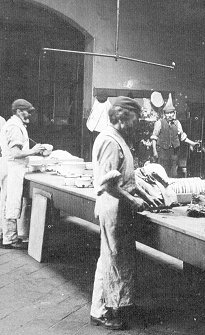|
Boulton and Watt soon realised their mistake and a year later Murdock
was offered the post of Manager at Soho Works. In 1801 Philippe Lebon
demonstrated gas lighting publicly in Paris and in 1802 Boulton and Watt
agreed to the installation of two gas lamps outside the Soho factory.
This was the first installation of gas lighting in the country. The
following year the whole works was illuminated by gas. In 1806 the
cotton spinning mill at Manchester that was owned by Phillips and Lee
was illuminated by Murdock’s gas lights and his invention was soon in
demand. It was not long before all large factories were using gas
lights. He was awarded the Gold Medal by the Royal Society in
recognition of his achievement.
Murdock’s interest was solely in lighting individual buildings, each
complete with its own gas production equipment, but others considered
the possibility of lighting many buildings, whole streets and even
complete towns by the installation of gas mains, which were fed from a
large gasworks.
|

A simple gas ceiling light. |